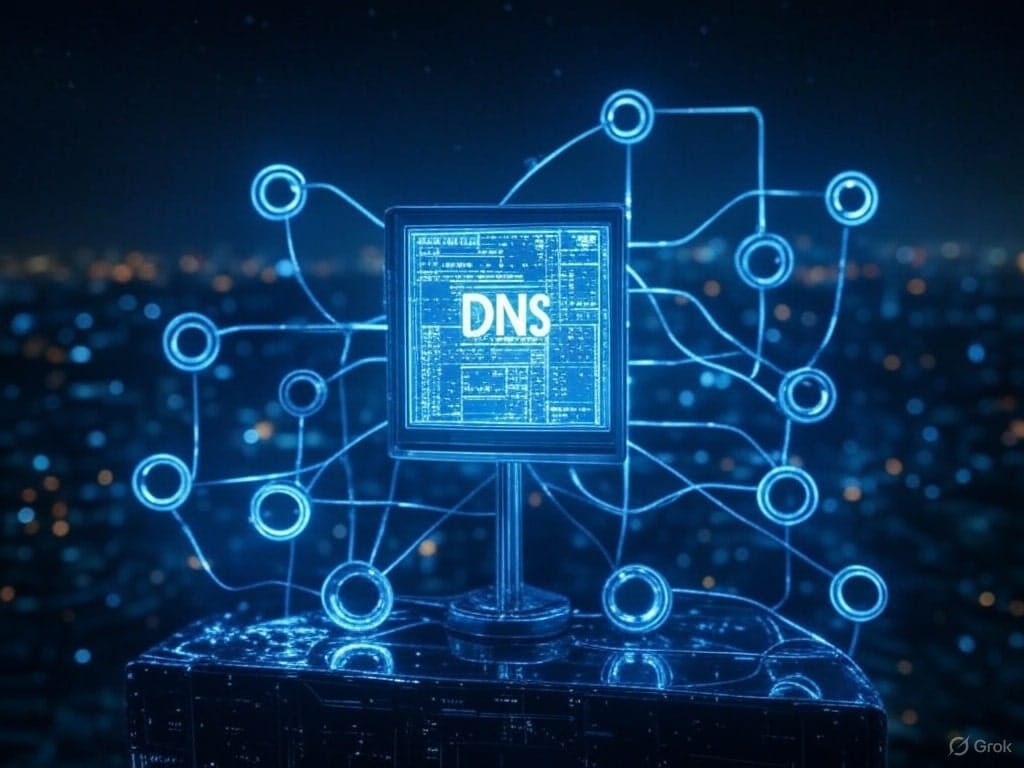Flushing the DNS cache is a crucial procedure for maintaining fast, secure, and error-free browsing. The DNS cache temporarily stores the IP addresses of visited websites, which speeds up access to those pages on future visits. However, this information can become outdated, leading to connection errors, slow page loading, or even dangerous redirects. Therefore, it’s important to know how to flush it in each operating system and browser.
What is the DNS cache and how does it work?
The DNS cache is a local record that stores the translation between domain names (like google.com) and their corresponding IP addresses. This prevents your device from having to query a DNS server every time you visit a website, speeding up the process. However, when DNS records are updated or if the cache becomes corrupted, it can cause access issues or display outdated information.
How to flush the DNS cache on different platforms
1. Flush the DNS cache on Windows 10 and 11
Follow these steps to flush the DNS cache on Windows:
- Click on the Start menu and search for “Command Prompt” or “CMD.”
- Right-click and select “Run as administrator.”
- Type the following command and press Enter:
ipconfig /flushdns
- A message will appear confirming that the cache has been successfully flushed.
Release IP, renew, and flush DNS on Windows:
To resolve deeper connectivity issues, you can also release and renew the IP:
ipconfig /release
ipconfig /renew
ipconfig /flushdns
2. Flush the DNS cache on macOS
To flush the DNS cache on Apple devices:
- Open Terminal from Spotlight (cmd + space) or from Launchpad.
- Enter the command:
sudo dscacheutil -flushcache; sudo killall -HUP mDNSResponder
- Enter your admin password when prompted.
Note: Depending on your version of macOS, the command may vary. For example:
- Monterey, Big Sur, Catalina: Use the previous command.
- Mojave, High Sierra, Sierra: Use
sudo killall -HUP mDNSResponder.
3. Flush the DNS cache on Linux (Ubuntu and other distros)
If you use Linux, follow these steps:
- Open the Terminal (Ctrl + Alt + T).
- For Ubuntu 20.04 LTS or earlier:
sudo systemd-resolve --flush-caches
- For Ubuntu 22.04 LTS or newer:
sudo resolvectl flush-caches
- Enter your password when necessary.
4. Flush the DNS cache in Google Chrome
The problem might also be in your browser’s DNS cache. For Chrome:
- Type in the address bar:
chrome://net-internals/#dns
- Click on “Clear host cache.”
Why is it important to flush the DNS cache regularly?
1. Resolve common DNS errors
Errors like DNS_PROBE_FINISHED_NXDOMAIN or ERR_CONNECTION_TIMED_OUT are often resolved with a simple cache flush.
2. Speed up the propagation of DNS changes
If you’ve changed servers or updated DNS records, flushing your cache will allow you to see the changes faster.
3. Prevent DNS Spoofing attacks
Frequent cache clearing helps prevent your device from falling victim to fraudulent redirects.
4. Avoid 404 errors from outdated information
If a page has changed servers or configuration, outdated cache can lead to access errors.
5. Remove obsolete DNS data
Changing DNS providers (such as switching to Google DNS or Cloudflare) requires flushing the cache to avoid conflicts.
Additional tips for optimal browsing
- Flush the DNS cache when you notice slowness or access issues.
- If you manage websites, do so after any DNS modifications.
- Restart your router from time to time to clear stored configurations.
- Always keep your operating system and browser updated.
Frequently Asked Questions (FAQ)
Is it safe to flush the DNS cache?
Yes, it does not affect your files, passwords, or settings. It only clears temporary information.
How often should I flush my DNS cache?
It’s recommended to do it every few weeks or whenever you face connection errors or DNS changes.
Will it improve my browsing speed?
Yes, especially after making network changes or if your device has accumulated old data.
How can I tell if the operation was successful?
On Windows, you will receive a confirmation message. In other systems, the absence of errors indicates that the process was successful.
Does flushing the DNS cache fix DNS errors?
Most of the time, yes. It is the recommended first step in addressing connection errors or pages that won’t load.
Conclusion
Flushing the DNS cache is a simple maintenance task that all users should perform periodically. It not only improves browsing speed but also protects your security and ensures that you always access the most up-to-date information. Keep this habit to enjoy a faster, safer, and more efficient browsing experience. For more guides and tips, keep checking our content and stay updated.

